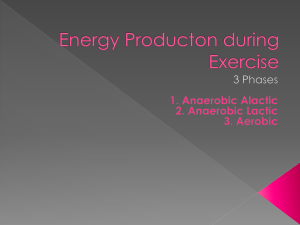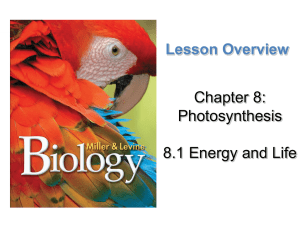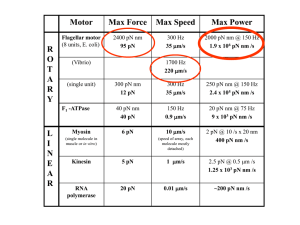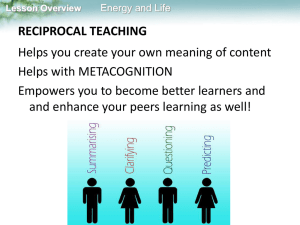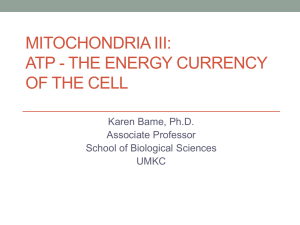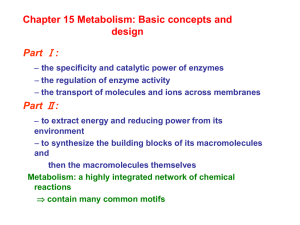4-1 ATP
advertisement
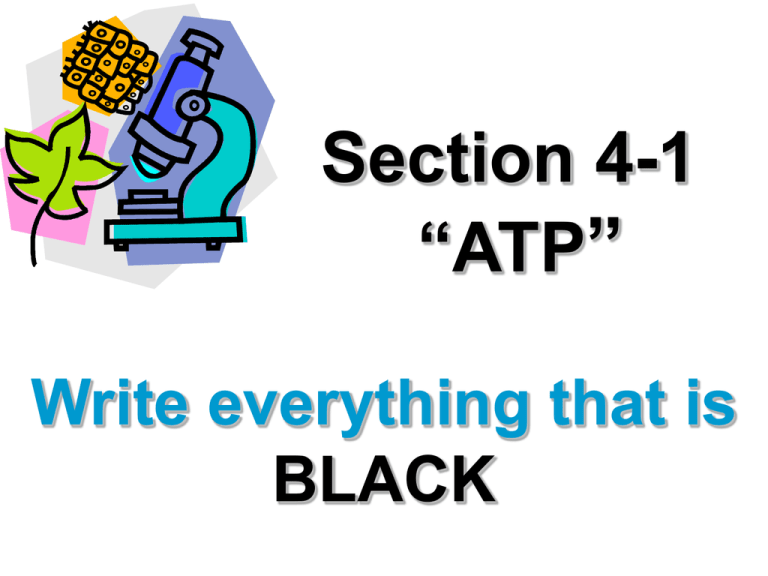
Section 4-1 “ATP” Write everything that is BLACK 4.1 Chemical Energy and ATP 4.1 KEY CONCEPT: All cells need chemical energy. 4.1 Chemical Energy and ATP The chemical energy used for most cell processes is carried out by ATP (adenosine triphopshate) • Molecules in food store chemical energy in their bonds. Starch molecule Glucose molecule 4.1 Chemical Energy and ATP • ATP transfers energy from the breakdown of food molecules to cell functions. – Energy is released when a phosphate group is removed. – ADP is changed into ATP when a phosphate group is added. phosphate removed 4.1 Chemical Energy and ATP Organisms break down carbon-based molecules to produce ATP • Carbohydrates are the most commonly broken down to make ATPadenosine triphosphate – not stored in large amounts – up to 36 ATP from one glucose molecule tri=3 adenosine di=2 diphosphate 4.1 Chemical Energy and ATP • Fats store the most energy – 80 percent of the energy in your body – about 146 ATP from a triglyceride • Proteins are least likely to be broken down to make ATP. – amino acids not usually needed for energy – about the same amount of energy as a carbohydrate 4.1 Chemical Energy and ATP Chapter 4 Booklet 1. You are going to get 2 pieces of paper and fold them in half like a book! 2. The front page is the title page! Write on this page CELLS & ENERGY. Come up with some type of picture for the title page. 3. Open the book up and number the pages 1-7. 4. We will staple the spine to keep it all together. 4.1 Chemical Energy and ATP Page 1 & 2 1. Page 1: Title: ATP (write down the following then transfer on to your booklet on page one.) -Define ATP -Define ADP -How are ATP & ADP alike? -How are they different? 2. Page 2: Title: ATP & ADP -Draw, Label, & COLOR Figure 4.2 on page 101






